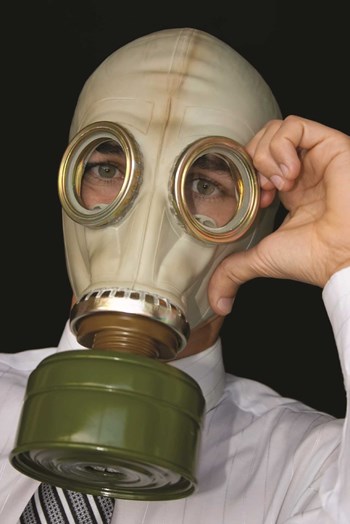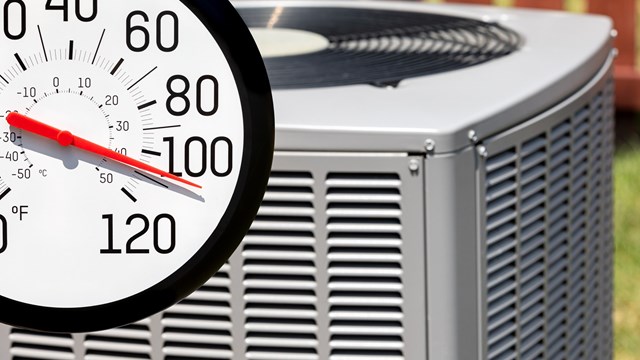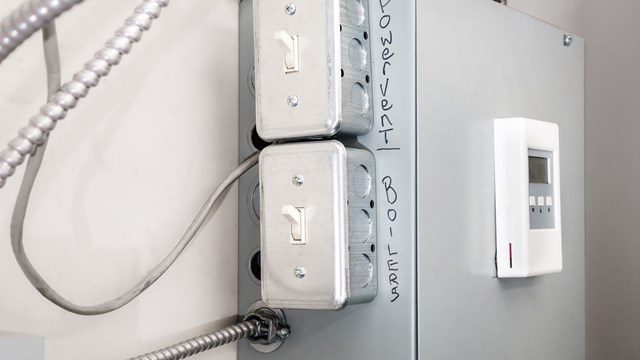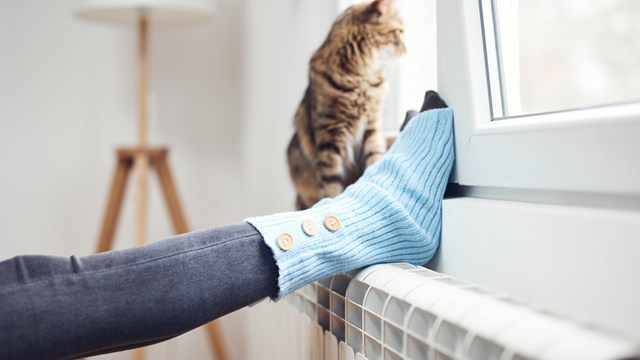
Air conditioning, climate control and proper handling of waste play a huge role in maintaining quality of life—not only in terms of comfort, but in terms of health as well.
In a multifamily building with scores, or possibly hundreds, of people living under one roof, cooking, cleaning, dusting and breathing, it’s no surprise that the airways, chutes and garbage rooms of these buildings can get clogged and dirty over time. Waste material, debris, and allergens can build up in a building’s airways and passages, causing everything from noxious smells to pest issues to bona fide health problems for residents.
Maintenance and Upkeep
How often should a multifamily building in New England have its garbage chutes cleaned and ventilation systems cleaned? That depends on who lives in the building, what their living habits are and how big the building is, says Christopher O’Korn, an account manager with SynergyOne Solutions, Inc. in Canton, Massachusetts.
“Other factors to consider would be the type of filter used, the type of flooring and the ‘time of use’ of the system,” says O’Korn. “For example, a retired couple that has hardwood floors with a good filter and uses their HVAC (heating, ventilation and air-conditioning) system 50 percent of the time would require air duct cleaning every two to three years. On the flip side, a family of four that has a hardwood floor and uses their HVAC system 50 percent of the time would require air duct cleaning every one to two years. For sanitation purposes, garbage chutes should be cleaned every three months. The chutes should be water tight and should be high-pressure steam cleaned and then disinfected.”
Donald Weekes, CHI, CSP, the Ottawa, Ontario-based president of The Indoor Air Quality Association (IAQA) says that ventilation systems in multifamily buildings should be cleaned on a building-by-building basis.
“For example, if you have a building in Midtown Manhattan or downtown Chicago that is subject to a variety of different types of pollutants, problems from construction to traffic you may want to clean your ducts more often than if you are on a farm in Vermont,” says Weekes. “You want to make sure you are gearing the amount of times you have cleaning done based on the amount of pollutants you have coming into your ventilation system.”
“The cleaning of duct work is dependent on each individual’s indoor air,” says Bill Benito, ASCA, and president of the National Air Duct Cleaners Association of America (NADCA). “Do you have dogs? Do you have cats? Do you have allergies? Do you have a lot of dirt collecting surfaces like rugs and curtains? There is no easy answer to how often ventilation systems should be cleaned.”
Common Causes
According to the U.S. Environmental Protection Agency (EPA) there are numerous sources of indoor air pollution in any home. Oil, gas, kerosene, coal, wood, tobacco products and building materials and furnishings as diverse as wet or damp carpet, pressed wood products and household cleaning supplies are among common pollutant sources found inside the home.
“Poor filter maintenance, poor housekeeping and lack of recycling are a few factors that contribute to dirty duct work and clogged garbage chutes,” adds O’Korn.
Immediate effects of indoor air pollutants may show up after one exposure or repeated exposures. These include irritation of the eyes, nose and throat, headaches, dizziness and fatigue. Most immediate effects are short-term and treatable. Oftentimes treatment is simply eliminating the person’s exposure to the source of the pollution if it can be identified. Symptoms of diseases such as asthma, hypersensitivity, pneumonitis and humidifier fever may also show up soon after exposure to some indoor air pollutants.
“When considering to have cleaning performed, cheapest is not always best,” warns O’Korn. “It’s best to look for certifications such as NADCA (National Air Duct Cleaners Association) in choosing a qualified contractor. Typically a NADCA-certified firm will charge between $400 and $600 to clean and decontaminate one air handling unit and related duct work. In a situation where there are multiple units to be cleaned, the price should go down.”
The EPA says that duct cleaning services typically—but not always—range in cost from $450 to $1,000 per heating and cooling system, depending on the services offered, the size of the system to be cleaned, system accessibility, climatic region, and level of contamination and type of duct material.
“We live on a big ball of dirt. Everybody brings dirt in from the outdoors. When you come in there is all kinds of things on you. When you take off your jacket or your clothes or when your dog or cat comes inside after being outside, all of this accumulates,” says Benito. “The HVAC can be considered the lungs of your house and it breathes the air that you bring in and re-circulates it. A lot of people don’t understand the HVAC system. It doesn’t manufacture the dirt; it only vacuums the air out of the living space. So whatever it’s vacuuming out of the living space is what’s getting caught in the duct system.”
How They Do It
Air duct cleaning removes dust, dust mites and other contaminants from the air duct system and prevents them from being circulated continuously. Ducts have also shown to be an ideal place for spores and other micro fungus to develop and grow. Due to the dark nature of the duct and the available nutrients from outside pollutants, the duct can become a breeding ground. In addition, various studies have shown that air duct cleaning can preserve a heating and cooling system. Therefore air duct cleaning is not only cost efficient but mandatory for the health of a building.
According to NADCA, the most effective way to clean air ducts and ventilation systems is to employ source removal methods of cleaning. This requires a contractor to place the system under negative pressure, through the use of a specialized, powerful vacuum. While the vacuum draws air through the system, devices are inserted into the ducts to dislodge any debris that might be stuck to interior surfaces. The debris can then travel down the ducts to the vacuum, which removes it from the system and the home.
“Typically, a visual inspection is done,” says O’Korn. “In some cases gravimetric testing is performed to find out if its within OSHA nuisance dust standards. In the case of mold contamination, swab sampling and air testing are performed.”
“You can do an inspection yourself. If you go to www.nadca.com there is a consumer section that has videos that we put together that shows you how to inspect your own system,” says Benito. “I would call in a professional if I had unwanted smells or odors, or if you had a fire in your condominium or one that was in your same building, if you have allergies or if you have a high humidity situation. Then you should bring in a certified ventilation inspector.”
Preventive Maintenance
A comprehensive preventive maintenance program can prevent the need for repeated duct cleaning and unnecessary repair costs.
“You should check the air filter and check it often, at least once a season,” says Benito. “I recommend pleated filters and there are MERV (Minimum Efficiency Reporting Value) ratings right on the filters. I would recommend a six to 10 rating, depending on the system.”
At the end of the day, when it comes to providing a healthy indoor environment, the proper monitoring, maintenance, repair and education are imperative. Once that is done, the only thing left to do is to breathe easy.
“Consumers need to be very aware that there are unscrupulous duct cleaners out there. They have actually been targeted by attorney generals in various states,” says Benito. “They will do a poor job. The EPA has done a study saying you are better off not cleaning your ducts than having a poor job done. That’s why you should deal with a NADCA-certified company. If there are any issues we have an ethics committee.”
Christy Smith-Sloman is a staff writer for New England Condominium. Freelance writer George Leposky contributed to this article.









Leave a Comment